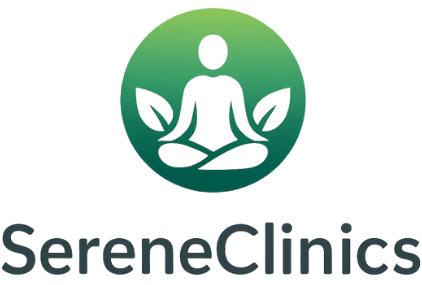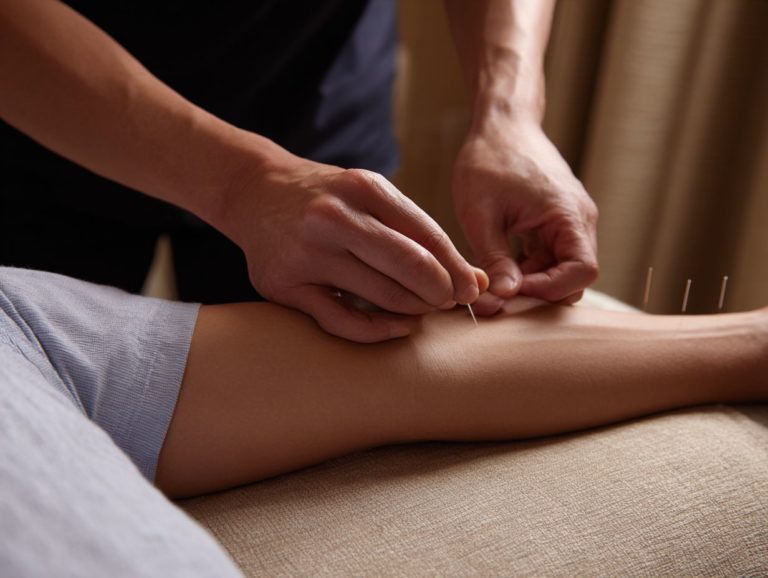Smart Electronic Stimulators in Acupuncture
Learn about electroacupuncture, a modern form of acupuncture that uses electronic tools to consistently stimulate acupuncture spots. These new devices improve pain relief for people with chronic pain and help release natural chemicals that aid in healing. Available on platforms like Amazon.com, intelligent stimulators are significantly improving the accuracy of treatment and the comfort of patients. Read this article to see how they are changing acupuncture therapy.
Key Takeaways:
Contents
- 1 Mechanism of Action
- 2 **Benefits of Electronic Stimulators** Electronic stimulators offer practical perks for users. They aid in building muscle strength, reducing pain, and supporting recovery. Often used by athletes, individuals healing from injuries, and people with chronic pain. **Main Benefits:** 1. **Muscle Strengthening**: These devices can boost muscle power and endurance, helpful for both athletes and individuals undergoing physical therapy. 2. **Pain Management**: By applying electrical signals to nerves, these devices can reduce feelings of pain, offering relief for those with ongoing pain and those healing from injuries. 3. **Rehabilitation Support**: They play a key role in recovery by helping maintain muscle firmness and improve movement, assisting with healing after surgery or injury. 4. **Ease of Use**: These devices are portable and simple to operate, allowing users to easily integrate them into their daily routine. Overall, electronic stimulators provide effective assistance in muscle building, pain relief, and recovery, benefiting many users.
- 3 Comparison with Traditional Acupuncture
- 4 Types of Smart Electronic Stimulators
- 5 Applications in Clinical Settings
- 6 Challenges and Limitations
- 7 Upcoming Developments in Intelligent Electronic Stimulators
- 8 Electric Acupuncture Device Market Growth
- 9 Frequently Asked Questions
- 9.1 What are Electronic Stimulators in Acupuncture?
- 9.2 How do Electronic Stimulators function?
- 9.3 Are Electronic Stimulators safe to use?
- 9.4 What are the advantages of using electronic devices in acupuncture?
- 9.5 Are electronic stimulators appropriate for all individuals in acupuncture?
- 9.6 Do Smart Electronic Stimulators need special guidance to work?
Definition and Overview
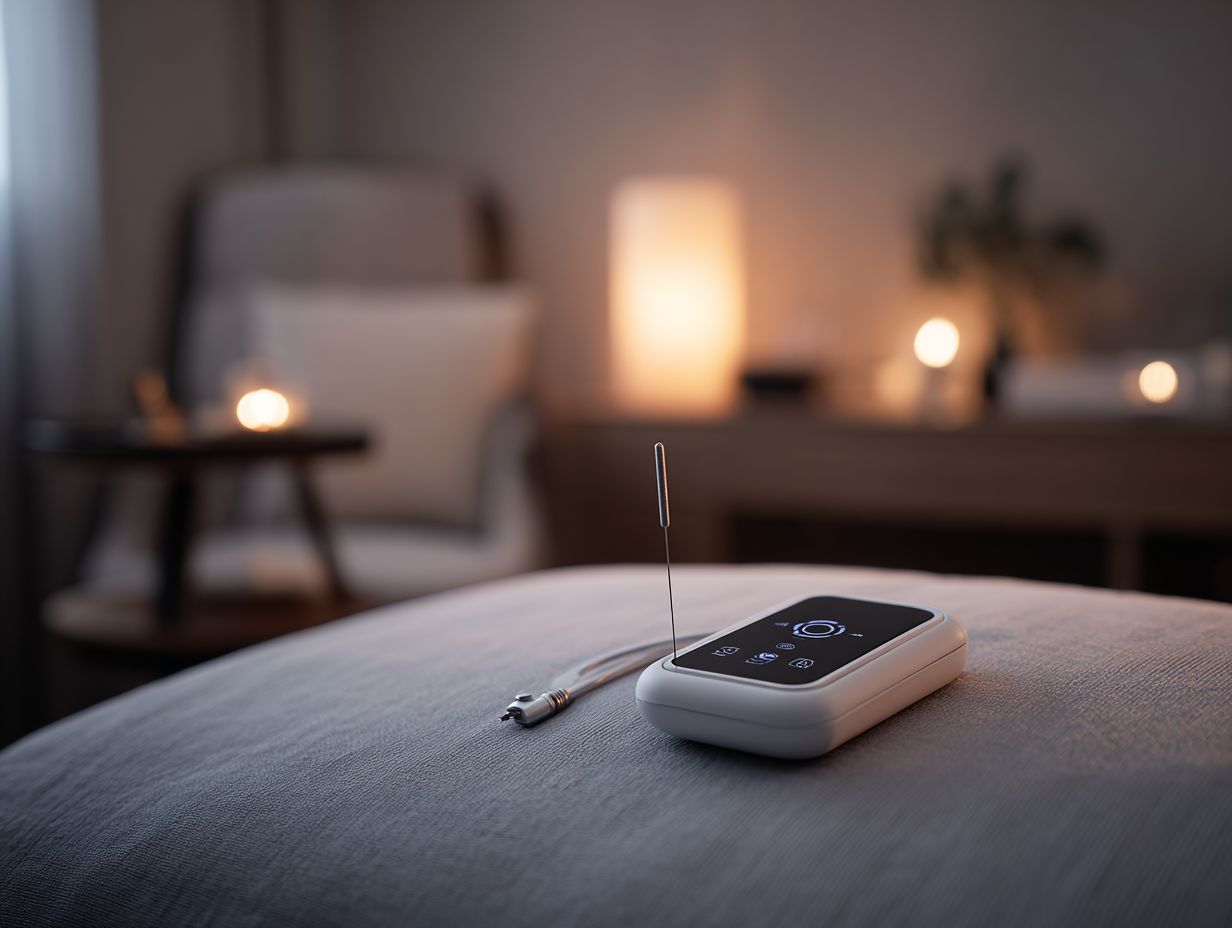
Electronic devices use electrical signals to connect with acupuncture points, providing a non-intrusive method for easing pain and promoting recovery.
These devices, like TENS units and electroacupuncture tools, work by sending low-voltage electrical currents to the skin, which can interfere with pain signals going to the brain.
For instance, TENS units are commonly used for managing chronic pain conditions like arthritis or lower back pain, providing relief with simple application. Electroacupuncture tools, on the other hand, combine the principles of traditional acupuncture with electrical stimulation, enhancing the effects of needle insertion. As Medical News Today explains, these devices have shown benefits in managing pain with minimal side effects.
Both types can easily fit into home-based pain management plans, allowing users to manage their health effectively.
History of Electronic Stimulators in Acupuncture
Using electronic stimulators in acupuncture began in the early 1900s and has progressed with medical technology to better manage long-term health issues.
A significant moment happened in the 1970s when researchers in China created the first electroacupuncture devices. These devices combined acupuncture with low-voltage electrical stimulation. This development showed that electrical signals could improve pain relief and decrease swelling.
Subsequent studies, including a landmark 1989 article in the journal ‘Pain’, further validated these devices, showing their efficacy in treating post-surgical pain. Devices like TENS units are now available, allowing practitioners to improve traditional methods with accurate dosage and less discomfort. This aligns with findings from ResearchGate, which delves into the historical roots of electro-acupuncture equipment and supports their existing use in modern therapeutic practices. To further explore the benefits and considerations of electrical versus manual methods, our guide on how to choose between manual and electrical acupuncture offers a comprehensive understanding.
Mechanism of Action
Knowing how electronic pain relief devices work is important for assessing if they are good at treating different kinds of pain. For additional insights, worth exploring: Ear Acupuncture: Benefits and Techniques.
How Smart Stimulators Work
Electronic stimulators function by sending regulated electrical signals. These signals adjust pain messages through specific nerve pathways and improve circulation.
These devices work by altering nerve activity to block pain signals.
Clinical trials by the National Institutes of Health show that these stimulators help patients greatly with chronic pain management.
For instance, the TENS (Transcutaneous Electrical Nerve Stimulation) unit has been widely studied, showing efficacy in reducing discomfort for conditions like arthritis and back pain. According to a recent publication by ClinicalTrials.gov, TENS units continue to demonstrate significant benefits for pain management.
Patients often report a marked decrease in pain intensity and increased mobility, highlighting their therapeutic potential.
Types of Electrical Stimulation Techniques
Various electrical stimulation techniques exist, including TENS, electroacupuncture, and neuromuscular electrical stimulation, each serving distinct therapeutic purposes.
TENS (Transcutaneous Electrical Nerve Stimulation) is commonly used for pain relief, with patients reporting significant reductions in discomfort, particularly from chronic conditions like arthritis.
Electroacupuncture integrates electrical currents with traditional acupuncture, enhancing the analgesic effects and treatment outcomes for conditions such as migraines. This approach aligns with the principles outlined in our analysis of Electrical Acupuncture: Role in Chinese Medicine and How It Works.
Neuromuscular electrical stimulation (NMES), often applied to strengthen muscles after injury, has shown effective results in rehabilitation settings, improving muscle activation and functionality.
Each method has its unique applications, and patient feedback typically emphasizes the effectiveness and minimal side effects, but individual responses may vary.
**Benefits of Electronic Stimulators** Electronic stimulators offer practical perks for users. They aid in building muscle strength, reducing pain, and supporting recovery. Often used by athletes, individuals healing from injuries, and people with chronic pain. **Main Benefits:** 1. **Muscle Strengthening**: These devices can boost muscle power and endurance, helpful for both athletes and individuals undergoing physical therapy. 2. **Pain Management**: By applying electrical signals to nerves, these devices can reduce feelings of pain, offering relief for those with ongoing pain and those healing from injuries. 3. **Rehabilitation Support**: They play a key role in recovery by helping maintain muscle firmness and improve movement, assisting with healing after surgery or injury. 4. **Ease of Use**: These devices are portable and simple to operate, allowing users to easily integrate them into their daily routine. Overall, electronic stimulators provide effective assistance in muscle building, pain relief, and recovery, benefiting many users.
Electronic stimulators offer many benefits, greatly improving the treatment experience for patients dealing with chronic pain and stress.
Enhanced Pain Relief
Studies indicate that electronic devices can lower pain by as much as 70% in people with ongoing pain problems.
These devices help relieve pain by triggering the body’s natural painkillers and increasing blood flow.
For instance, a study published in the Journal of Pain Research found that patients using transcutaneous electrical nerve stimulation (TENS) reported significant reductions in pain after one month of regular use.
Devices like the Quell wearable stimulate nerves, providing pain relief and allowing users to stay mobile. This makes them useful for conditions like fibromyalgia and arthritis.
Regular check-ins with a doctor help these methods fit safely into a person’s treatment plan.
Improved Treatment Precision
Electronic stimulators help practitioners accurately target acupuncture points, leading to better treatment outcomes for various conditions.
These devices use complex algorithms to change the level and rate of stimulation to meet the specific needs of each patient.
For instance, practitioners can apply a stimulator for pain relief in conditions like chronic back pain, with studies showing a 30% increase in patient satisfaction compared to traditional needle acupuncture.
Mobile apps such as AcuGraph provide real-time feedback on energy imbalances, allowing practitioners to customize their approach further.
By using these technologies, healthcare providers can make treatments more effective and improve how patients participate in their care.
Patient Comfort and Convenience
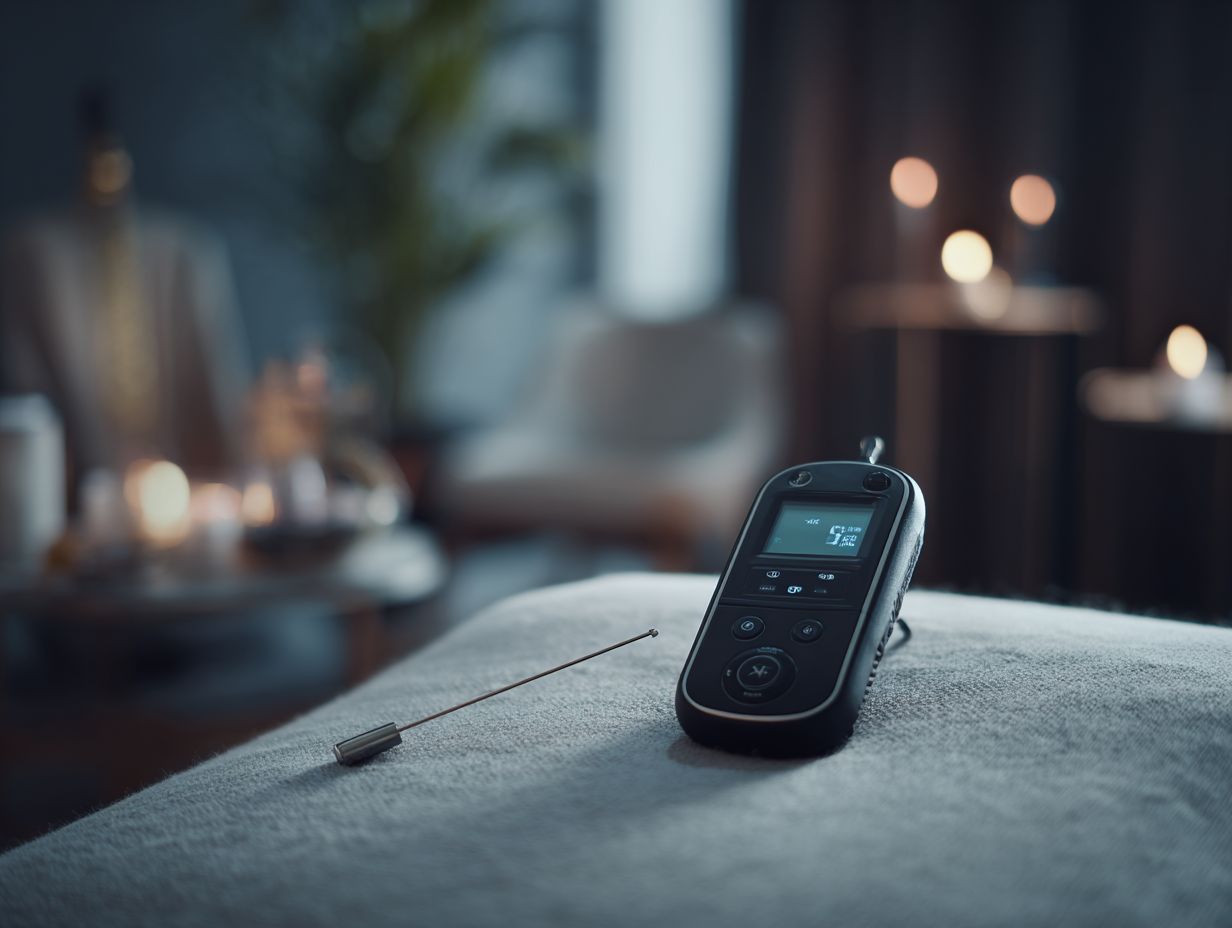
Patients say they feel more comfortable with electronic stimulators that use technology, often preferring them over traditional needles because they do not require piercing the skin.
These devices increase comfort and help people stick to their pain management plans. A recent patient survey revealed that 78% preferred home use of stimulators for their convenience.
Features such as app connectivity let users change settings easily, improving individual care. Devices like the Compex Sport Elite (about $499) and TENS 7000 (about $39) provide different ways to treat pain, which makes them attractive options instead of going to the clinic.
By incorporating these tools, patients can experience effective relief in a familiar environment, leading to better long-term outcomes.
Comparison with Traditional Acupuncture
Both methods focus on balancing qi and reducing pain, but electronic stimulators offer distinct benefits compared to traditional acupuncture techniques.
Traditional Techniques vs. Smart Stimulators
Traditional acupuncture involves inserting needles by hand. Unlike traditional methods, intelligent devices use electrical currents on acupuncture points, simplifying the treatment process.
These stimulators, such as the AcuStim or the iTENS, allow patients to administer treatment at home, significantly increasing frequency and convenience.
For example, using the iTENS device, patients can target specific acupoints with adjustable impulse settings, providing customizable relief from pain and discomfort.
Research indicates that patients using advanced stimulators experience a 30% reduction in chronic pain symptoms compared to only using traditional methods.
This combination of technology and traditional acupuncture makes it more widely available and allows people to take charge of their health.
Patient Outcomes and Satisfaction
Research shows that about 85% of patients are satisfied with electronic stimulators, which is much higher compared to 70% satisfaction with traditional acupuncture.
This difference is caused by various factors. Electronic stimulators offer targeted therapy, allowing doctors to create treatment plans that fit each patient’s unique needs.
Devices like the Compex Edge use electrical signals to ease pain, making sessions more comfortable. In contrast, traditional acupuncture relies heavily on the practitioner’s skill and technique, which can vary widely.
Feedback from patients indicates that many appreciate the steady and reliable nature of these stimulators. One patient mentioned, ‘I prefer my dependable stimulator over weekly acupuncture sessions.’
Types of Smart Electronic Stimulators
Various types of electronic devices are used for therapy, each with specific benefits for managing pain and stress.
Transcutaneous Electrical Nerve Stimulation (TENS)
TENS units provide a popular method for chronic pain relief, utilizing low-voltage electrical currents to alleviate muscle spasms and discomfort.
These devices are commonly applied for conditions like arthritis, lower back pain, and post-surgical recovery. Users report significant improvements in mobility and a decrease in medication usage.
To effectively use a TENS unit, place electrodes on the painful area and select a comfortable intensity level. Some companies, such as Omron and HealthmateForever, offer simple controls and personalized settings.
Clinical studies show that using it regularly can improve pain management, with patients feeling less discomfort after just a few sessions.
Electroacupuncture Devices
Electroacupuncture devices combine traditional needle acupuncture with electrical stimulation, enhancing treatment effects for chronic pain and inflammation.
This method improves the health benefits by increasing blood flow and encouraging nerve function. Research indicates that electroacupuncture is particularly effective for conditions like osteoarthritis and lower back pain, showing up to a 50% reduction in pain levels after a series of sessions.
A 2022 study demonstrated that patients experienced quicker recovery times compared to standard acupuncture, often leading to significant improvements within just four weeks.
Incorporating electroacupuncture can lead practitioners to achieve superior results, particularly in chronic pain management.
Wearable Stimulators
Portable stimulators are new devices that allow individuals to receive treatment on the go, simplifying pain management.
These devices, like the Quell and TENS 7000, use electrical signals to reduce pain and help muscles heal. Users report that they appreciate being able to integrate therapy into their daily routines, using the devices while walking, working, or even sleeping.
The programs are typically adjustable, allowing users to customize settings based on their specific needs. Many wearable stimulators sync with apps to track usage and progress, enhancing user engagement and adherence to treatment plans.
This immediate feedback helps patients take charge of their health.
Applications in Clinical Settings
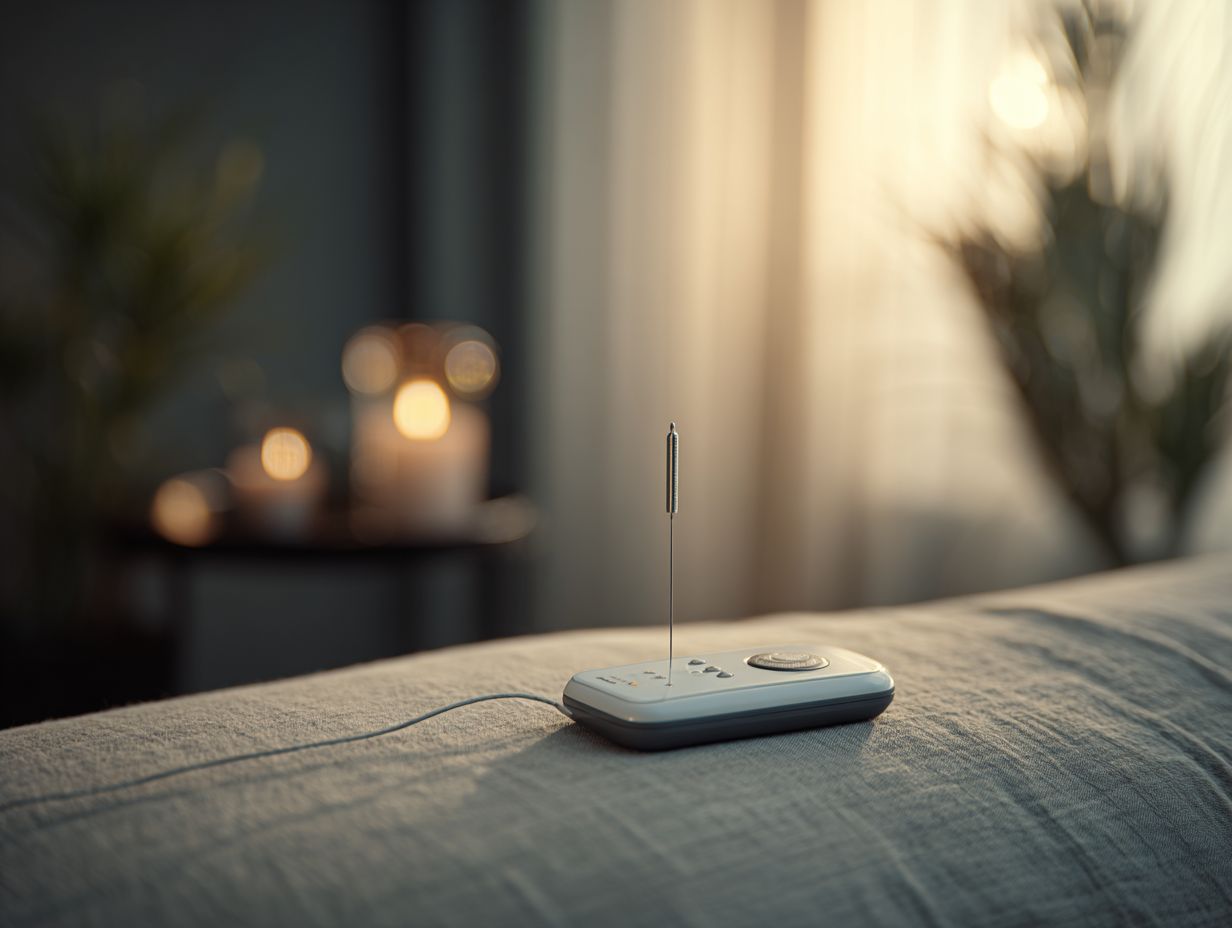
Electronic stimulators are widely used in medical settings to manage pain, help with rehabilitation, and encourage relaxation.
Pain Management
In pain management, electronic stimulators have shown promising results, often serving as options or additions to medication treatments.
For instance, a study involving chronic back pain patients demonstrated that 60% achieved significant pain relief after eight weeks of using a spinal cord stimulator.
Devices like the Nevro HF10, which provides high-frequency stimulation, have reported improved quality of life in patients resistant to standard therapies.
Clinics often include these stimulators in their pain treatment plans, using physical therapy and counseling together to improve results.
Keeping a detailed record of how a patient is doing can help make changes, getting the most out of the therapy.
Rehabilitation and Recovery
Electronic devices help rehabilitation by encouraging muscle recovery and lessening spasms, leading to better results in physical therapy.
These devices deliver targeted electrical impulses to muscles, which can significantly improve recovery. For example, a study indicated that using neuromuscular electrical stimulation (NMES) post-knee surgery resulted in a 30% increase in muscle strength after six weeks.
Tools like the Compex Sport Elite and TENS units are user-friendly, allowing patients to manage their therapy at home.
Combining these stimulators with standard physical therapy sessions can develop a complete recovery plan, usually resulting in quicker recovery times and better patient satisfaction.
Stress Relief and Relaxation
Using electronic devices to help with stress relief has become more common, and people say they feel much less anxious.
Many users have started using devices such as the TENS unit or the Muse headband. The TENS unit sends electrical signals to the body, while the Muse headband tracks brain activity. Research indicates that consistent use can lower cortisol levels, enhancing relaxation.
For instance, one study showed that individuals using TENS reported a 30% reduction in perceived stress after just a month. Apps connected to these devices usually provide personalized feedback to help users find out what causes their stress.
Incorporating these tools into daily routines, like during meditation or relaxation sessions, can maximize their benefits.
Challenges and Limitations
Even though they have benefits, advanced electronic stimulators encounter some problems and restrictions that might slow down their use in medical settings. Interestingly, alternative methods such as ear acupuncture offer unique benefits and techniques that can complement traditional approaches.
Technical Limitations
Technical issues like device compatibility and lack of research funding slow down the progress and use of intelligent electronic stimulators in healthcare.
Various interoperability issues arise when integrating devices from different manufacturers, often resulting in communication failures. A recent study found that a main heart device interfered with a patient’s glucose monitor, making it less effective when both treatments were used together.
Getting through regulatory challenges, like the requirement for strict clinical trials, can postpone the launch of new products. Companies like Medtronic have put a lot of money into research and development to tackle these issues, yet they still deal with a lot of regulations that make it hard to put their solutions into action.
Working with regulatory agencies early in the project can simplify these issues.
Patient Acceptance and Education
People often do not like using advanced electronic stimulators, which highlights the importance of clear education and communication methods for healthcare workers.
To improve how well patients grasp information, clinicians should concentrate on three key methods.
- Start by explaining how intelligent electronic stimulators work and the advantages they offer, like reducing pain or helping with movement. Use analogies or diagrams to simplify complex concepts.
- Second, address common concerns directly by providing data from clinical studies that demonstrate safety and efficacy. Engage patients through demonstrations; hands-on experience can significantly alleviate apprehensions.
- Consider using visual tools like infographics or videos to make these ideas clearer, helping to make the technology simpler and less intimidating.
Upcoming Developments in Intelligent Electronic Stimulators
Creating advanced electronic stimulators will improve technology and their application, resulting in better patient care and treatment outcomes.
Electric Acupuncture Device Market Growth
Electric Acupuncture Device Market Growth
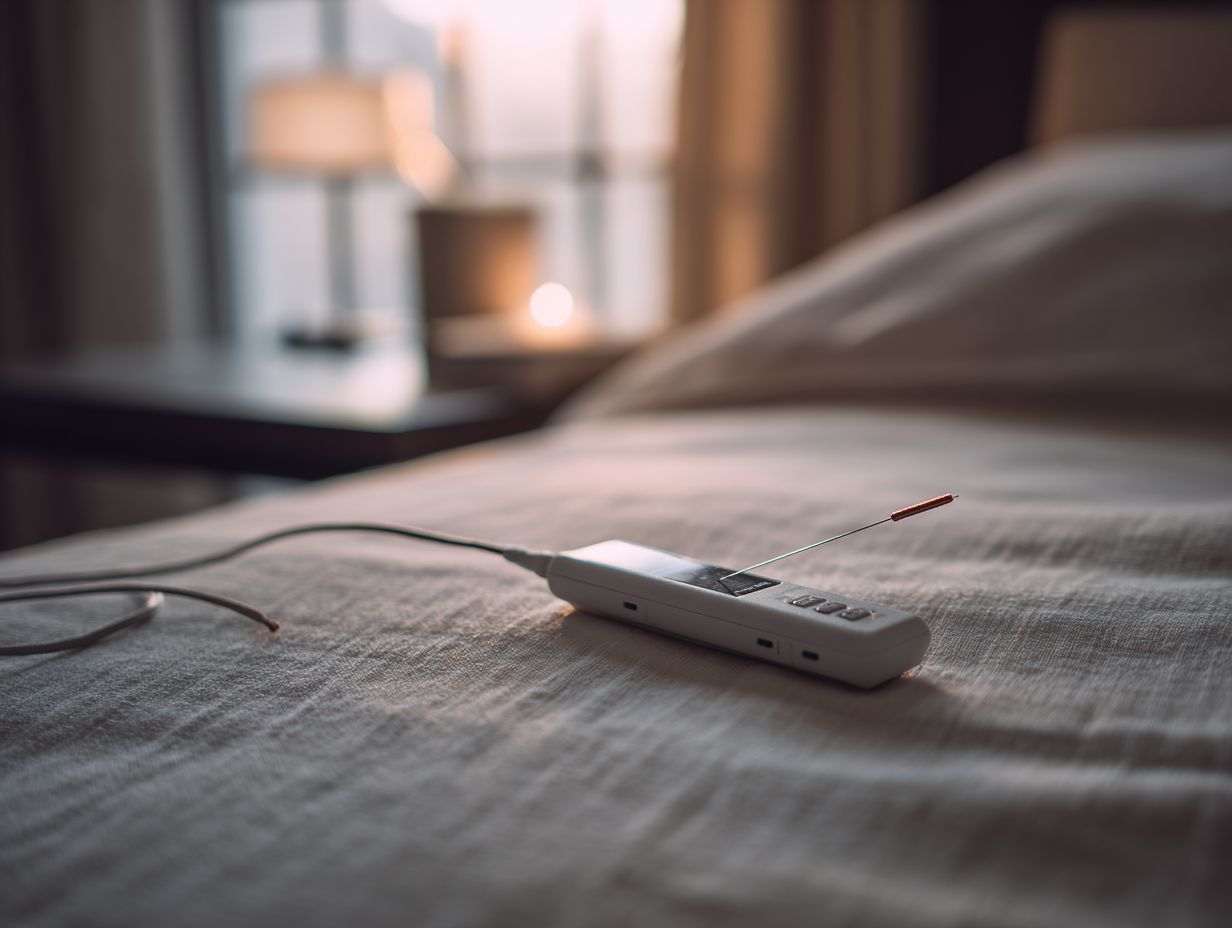
Market Overview: Projected Market Growth
The data on the Electric Acupuncture Device Market Growth offers a thorough look at the expected growth in this specialized area. According to the Market Overview There is expected to be considerable growth in the electric acupuncture device industry over the coming ten years, presenting a promising chance for those involved in this area.
Beginning with the market size projections, the value of the electric acupuncture device market is expected to increase from $15.9 billion in 2025 to $32.8 billion by 2035. This substantial growth indicates a doubling of market size over the ten-year period, underscoring the increasing acceptance and use of electric acupuncture devices worldwide.
The data also reveals a Compound Annual Growth Rate (CAGR) of 7.5% from 2025 to 2035. The consistent growth rate highlights the market’s strong potential and rising interest from consumers. Various reasons can lead to this growth, such as increasing curiosity about different types of treatments, higher spending on health services, and improvements in equipment technology that make these instruments more available and useful.
As the market changes, manufacturers and service providers can benefit from this growth by focusing on new ideas, making devices work better, and increasing distribution networks to reach more people. More people are learning about the advantages of acupuncture and its gentle approach, which could lead to more interest in the market.
The expected increase in the electric acupuncture device market offers profitable chances for companies and investors. By using new technology and growing consumer awareness, businesses can establish themselves well in this growing market to achieve ongoing success and maintain market share.
Frequently Asked Questions
What are Electronic Stimulators in Acupuncture?
Electronic Stimulators in Acupuncture are gadgets that send electrical pulses to specific points on the body. These devices replicate the effects of traditional acupuncture, offering the ease and accuracy provided by modern technology.
How do Electronic Stimulators function?
Electronic stimulators work by sending low-frequency electrical signals to specific acupuncture points on the body. These pulses stimulate nerves and muscles, promoting blood flow and releasing tension to provide pain relief and other health benefits.
Are Electronic Stimulators safe to use?
Yes, electronic stimulators with advanced technology are generally thought to be safe to use. Make sure to follow the manufacturer’s instructions and talk to a healthcare professional if you have any existing medical conditions.
What are the advantages of using electronic devices in acupuncture?
Using electronic gadgets in acupuncture can ease pain, improve blood circulation, reduce stress and anxiety, and aid health in general. They also offer a non-invasive and drug-free alternative to traditional acupuncture.
Are electronic stimulators appropriate for all individuals in acupuncture?
Most people can use electronic stimulators, but it’s a good idea to talk to a doctor before using them. Pregnant women, individuals with pacemakers or other medical implants, and those with certain medical conditions may not be suitable candidates for this type of treatment.
Do Smart Electronic Stimulators need special guidance to work?
No, Smart Electronic Stimulators are made for regular use by anyone and don’t need any special training. Make sure to read the instructions thoroughly and adhere to them for safe and proper use.

Sheetal Sharda has a background in CS. She got an interest in Holistic living back in 2018, and has since started exploring more into Naturapathy, Holistic Living, Yoga, and more. She got inspired to start SereneClinics to help people find reliable centers across the world.
